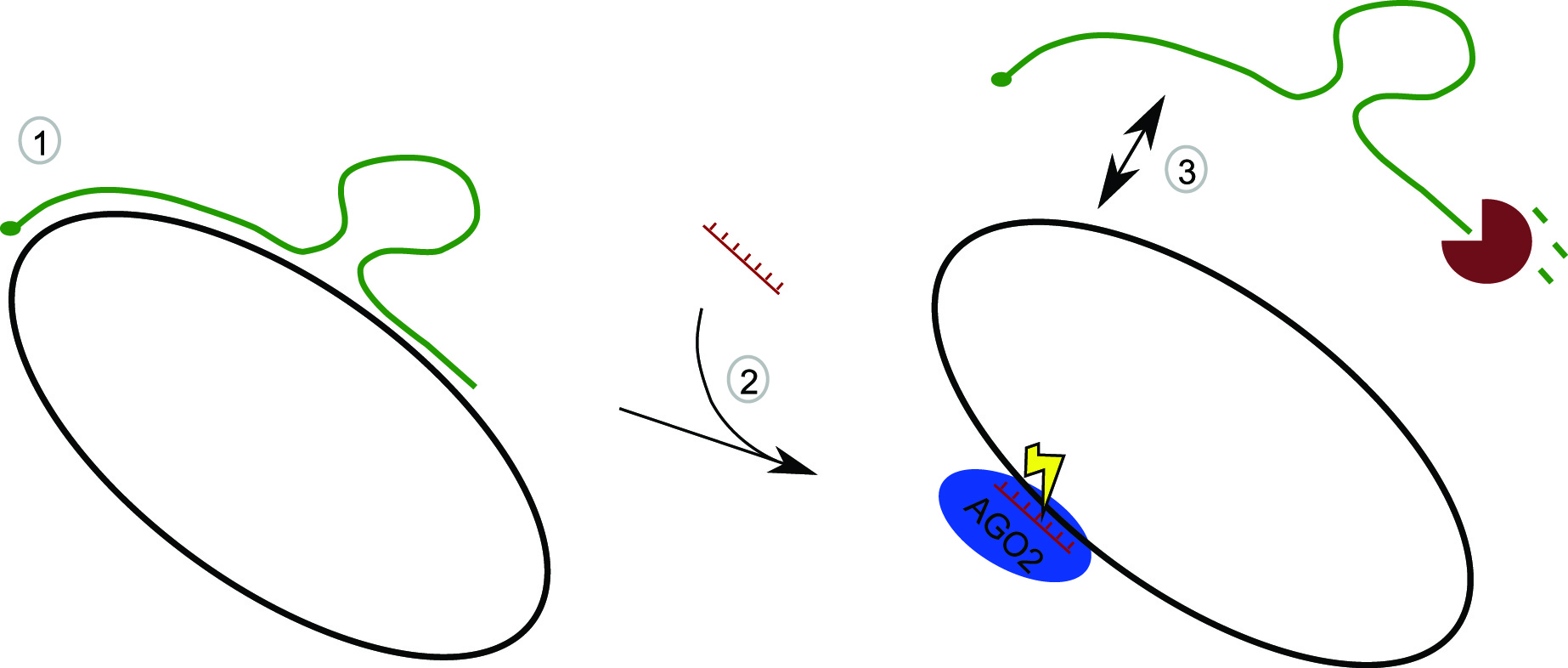New research provides a better understanding of the regulation of our genes
In collaboration with an Australian research group, a research team at Aarhus University has characterised a hitherto unknown and revolutionary way by which cells can regulate the formation of proteins. This involves an overlooked circular RNA molecule in human cells and a well-known microRNA. The discovery may contribute to a better understanding of the cell regulation of genes and hence for the development of cancer and other diseases.


Controlled regulation of the cell’s protein formation is crucial for normal metabolism. Many diseases – including cancer – arise due to misregulation of certain key proteins, creating a dangerous imbalance. Understanding the cell’s way of regulating protein expression is therefore closely linked to understanding the origin of various diseases. The characterisation of a new model for gene regulation hereby reveals alternative ways for the cell to control the formation of proteins.
Central to the newly discovered model is a circular RNA. The circular RNA is an unusual structure that does not normally occur in human cells. The discovery therefore sheds light on a completely new and overlooked class of RNA.
Professor Jørgen Kjems and his colleagues from Aarhus University have also demonstrated that the circular RNA is involved in the control of a protein-coding gene, CDR1. In addition, the researchers have uncovered another layer of complexity by showing that the circular RNA itself is regulated by a specific microRNA. MicroRNAs typically regulate cellular levels of protein-coding mRNA (messenger RNA – which is important for cell function). However, in this case, the microRNA regulates the circular RNA, which in turn affects the level of a protein-coding mRNA.
The discovery of a circular RNA intermediate as a mediator for the signal from microRNA to the protein-coding messenger RNA leads to entirely new ways of looking at gene regulation and will no doubt contribute to a better understanding of the cells’ complex network of gene regulation in the future and thus of various diseases as well.
The results were recently published in The EMBO Journal by a research team led by Jørgen Kjems, professor of molecular biology, Aarhus University, in collaboration with researchers from the Garvan Institute of Medical Research in Australia.
miRNA-dependent gene silencing involving Ago2-mediated cleavage of a circular antisense RNA
Thomas B Hansen1, Erik D Wiklund1,2, Jesper B Bramsen1, Sune B Villadsen1, Aaron L Statham2, Susan J Clark2 and Jørgen Kjems1
1Department of Molecular Biology, Interdisciplinary Nanoscience Centre (iNANO), Aarhus University, 8000 Aarhus C, Denmark
2Cancer program, Garvan Institute of Medical Research, 2010 Darlinghurst NSW, Australia
More information
Professor Jørgen Kjems
Department of Molecular Biology and Genetics/iNANO, Aarhus University, Denmark
jk@mb.au.dk, +45 2899 2086
Text: Thomas Birkballe Hansen og Lisbeth Heilesen
Translation: Lisbeth Heilesen
